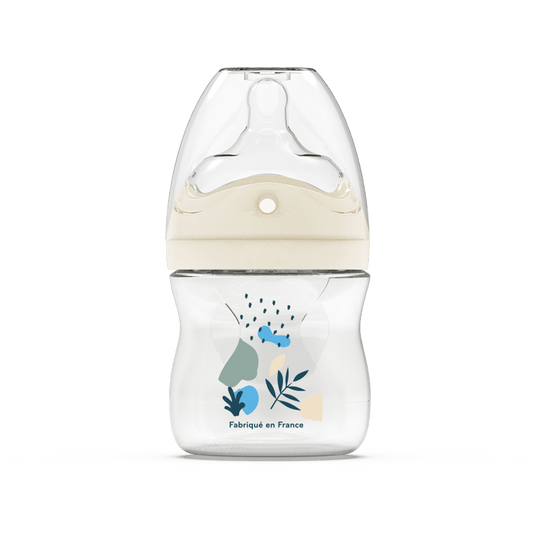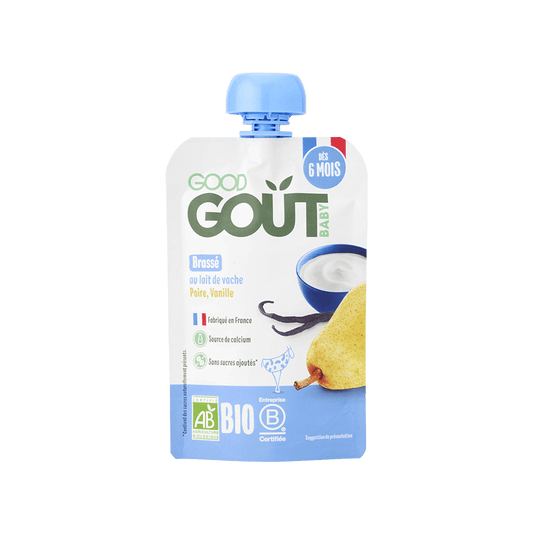From the top of their high chair, some babies do not hesitate to close their mouths , turn their head away, push the plate away, throw their spoon or simply say no when it comes to eating new foods. This reluctance or this rejection may be the expression of food neophobia , a protective reflex that usually appears around 18 months.
How to detect food neophobia?
Food neophobia is especially common in children between 2 and 10 years old. Before 18 months , we tend to talk about reluctance or mistrust . At the same time, put yourself in your child's shoes: a Jerusalem artichoke can seem suspicious the first time! Joking aside, the fear of eating new foods can make everyday life a little complicated. It is therefore important to better understand this phenomenon of food neophobia and find solutions so that baby feels good about himself!
"In France, 75% of children aged 2 to 8 exhibit neophobic behavior (refusal to taste certain foods, to try new dishes, or even refusal of foods they previously enjoyed)¹"
Distinguishing between a child suffering from neophobia and a difficult or hyper-selective child is not always easy. According to the Nutritional Information and Resource Center, what should attract your attention is if the rejection occurs before the child even puts the food in his mouth. If he expresses his refusal in anticipation at the mere sight of a vegetable or by smelling its odor, then it could be neophobia . The other sign often mentioned is the fact of fiddling with food for very long minutes before putting it in his mouth. The child looks at it, touches it, squashes it, moves it from one side of his plate to the other... (Which tends to make you lose patience). In short! He is buying time so he doesn't have to start. If this behavior comes back every time you offer him a new culinary experience, then this too could be neophobia .
Are there any foods that are particularly scary for children?
No! In reality, what worries babies who exhibit food neophobia is often the novelty effect. Their anxiety will then tend to grow when faced with the discovery of a new food and sometimes even when faced with a new recipe. Let's take the example of carrots : between their raw and whole versions with or without tops , a puree , a gratin , a soup or Vichy carrots , they will clearly never look the same . What is " new " for your child is therefore often what he does not recognize! (and therefore not only what he does not know). It is therefore essential to announce the color to him by presenting the dish before bringing it to him (as is done in good restaurants!).
What should I do if my child has a food problem?
When a child categorically refuses a food, it is not always for the pleasure of saying no, it may also be simply because he does not like it or because he has developed a form of fear : food neophobia. It is therefore important, as parents , to try to read between the lines, to understand what is really going on. If it is a matter of taste, this does not mean that you should remove the food from his life! On the contrary, the whole challenge will be to offer it to him from time to time, why not in another form, another texture or in another recipe. If it is fear that is blocking the child then you will have to take the time to defuse the situation by showing him that you too eat broccoli and that everything is going well for you. With age, not only do tastes change but there is also the socialization factor that comes into play! Eating broccoli at daycare or in the canteen with your friends is nothing like the experience you have at home . If the influence of your peers is effective, it also means that your own behavior or that of other siblings can also have an impact . When it comes to food, mimicry and exemplarity can make your life easier.
How to get people to eat and enjoy fruits and vegetables?
Even if he doesn't say it, your little one is just like you, he likes to have choices ! Having a fruit basket at home or showing him vegetables will already guide his current desire. The earlier children learn to know and recognize what they eat - by naming fruits and vegetables, touching them, smelling them, tasting them, and cooking them - the more they will tend to want to eat them. Knowledge of fruits and vegetables is therefore also part of the solutions to reduce a child's food neophobia . Whatever the case, always keep in mind that each child is different and that you must continue to offer, and re-offer, fruits and vegetables again and again. Don't lose patience, food curiosity is for life!
Can food neophobia be prevented?
According to some studies² , the earlier a child is exposed to a wide variety of smells and flavors, the less likely he is to have food reservations . This acceptance could even begin in utero or during breastfeeding : in other words, a varied and balanced diet during pregnancy³ and the first few months after giving birth would help make your baby a little taste adventurer! In the same way, take advantage of the first few months of solid food to introduce him to as many flavors as possible (making sure, of course, to offer him foods one by one). As long as he is motivated and willing, you can then enrich his palette of new smells, tastes and textures!
¹Duchesse Kids, interview with Sophie Nicklaus, Director of Research at INRAE, Center for Taste and Food Sciences in Dijon.
²NICKLAUS, S. & MONNERY-PATRIS, S. How does food neophobia affect children's diet? Origin, development, and practical consequences for parents and educators. Nutrition and Dietetics Notebooks, 2024, doi: 10.1016/j.cnd.2023.12.003.
³Schaal B, Marlier L, Soussignan R. Human fetuses learn odors from their pregnant mother's diet. Chem Senses 2000;25:729-37













